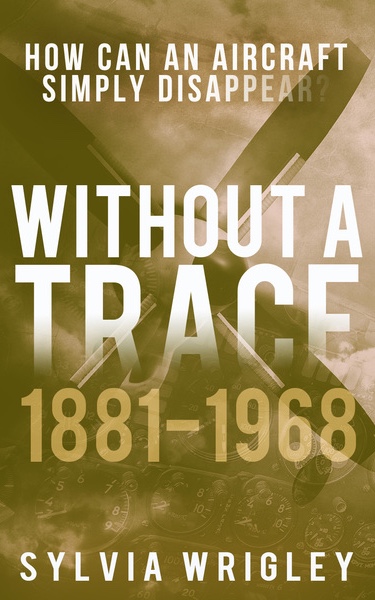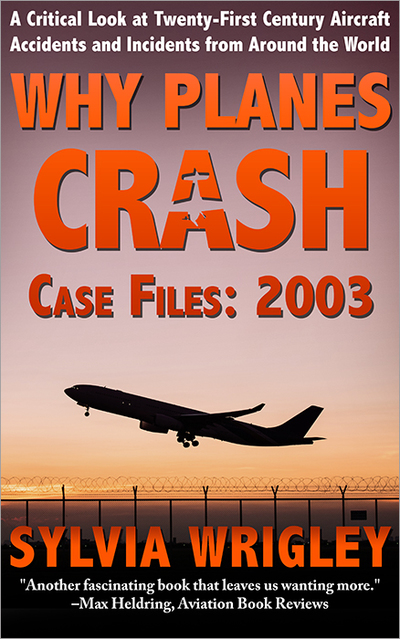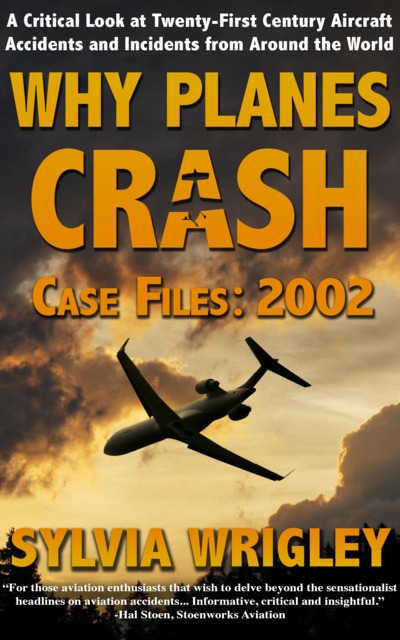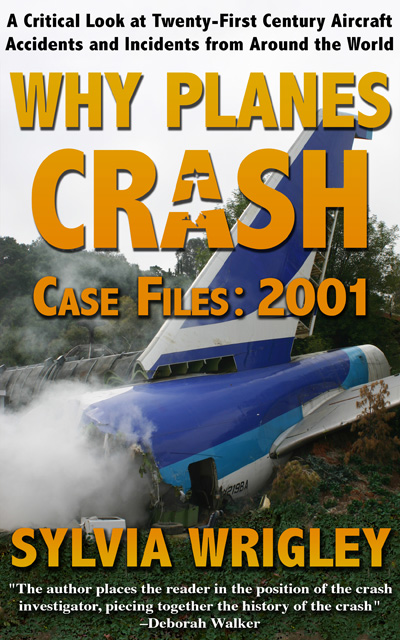When Not To Go Around
We spend a lot of time talking about bad landings where the pilot(s) should have broken off the approach and gone around. It’s common to continue to try to land at all costs even when the simpler and more sensible option would be to go around and try again. I thought it was worth looking at this crash which shows the opposite: sometimes attempting to go around will just make things worse.

On the 24th of August 2020, a student pilot at Toronto Buttonville Municipal Airport crashed into a hangar at the end of his first solo at a small Canadian airport known as Buttonville.
Buttonville Municipal Airport is located 29 kilometres (18 miles) north of Toronto. It started as a privately owned grass strip in 1953 and became an airport in 1962. Since then the local area has become built up, leading to strict noise-control procedures and threats of redevelopment, as the land value is now worth much more than the airport. Plans to replace the airport into a 170-acre property with condominiums, retain shops and office space have been deferred until at least after 2023. The tower, which was replaced in 2007 for a cost of $2 million, was closed down by Nav Canada in 2019. Buttonville is now an uncontrolled airport with two asphalt runways, with 15/33 being the main runway in use.
Canadian Flyers runs a flight training school from the airport and it was one of their students who was involved in the crash. The student pilot was approved for his first solo flight in a Cessna 172, registration C-GJQB. He took off without incident from runway 33, flying several circuits. Everything seemed fine until he came in to land, when he lost control of the aircraft.
This crash has received particular attention as the Cessna 172 had a video camera mounted in the cockpit and the footage of the landing and impact with the hangar was released on social media.
If you watch the video you can see how the problems stacked up on the student pilot. He touches down very flat on runway 33 in what looks like a three-point landing. The Cessna drifts to the left at which point he applies right rudder and applies full power, presumably thinking he should attempt a go-around. He over-corrects and the plane, gathering speed, turns to the right.
As the Cessna leaves the runway, the pilot places both hands on the yoke and pulls back, possibly in hopes of taking off or simply (sensibly) to raise the prop as the aircraft bounces, however he doesn’t reduce power. The Cessna continues out of control, bouncing across the grass and the taxiway towards the apron and the hangar. The pilot clearly panics and turns the yoke hard right in an attempt to turn away from the hangar. He crashes into the hangar and the video ends.
The runway excursion lasted for about 150 metres (500 feet) off the runway and a pilot who knows the airfield posted to PPRuNe that the plane must have been “slightly airborne” as it managed to get over two ditches in the grass, either of which should have stopped the Cessna 172.
Crews remain on scene at Buttonville airport after a small plane with one occupant was involved in an incident.
The plane crashed into a hanger on the north end of airport property.
The pilot has been transported to hospital with serious but not life threatening injuries. pic.twitter.com/LkpyqLpINn
&mdash Markham Fire (MFES) (@MarkhamFire) August 24, 2020
The pilot was treated at hospital for minor injuries. The hangar sustained major damage and the aircraft was destroyed in the impact.
I have to admit, I feel a bit embarrassed for the student who clearly took the advice that you can always go around a little bit too literally.
Somewhat bizarrely, a second student accident happened at the same airport just six days later.

An instructor and a student took off in a Cessna 172M Skyhawk, registration C-GWYC, when the engine began to lose power. The instructor took control and found the engine was not responding. Low, slow and with built-up areas surrounding the airfield, he attempted to land in a nearby field; however The aircraft did not have enough momentum and struck a hill, coming to a rest in a ditch near the road.
TSB Canada are investigating both accidents. I suspect that the flight school is going to come under some pressure.








I do hope that the unfortunate student pilot will have a full recovery. Sending a student off on his or her first solo is always a bit of a knife-edge. (S)he has only limited experience, a great deal depends on the instructor. As well as being a bit of a psycholigist, he instructor has to weigh all circumstances. Performance of the student over the course of the previous lessons, his or her confidence and of course circumstances like weather, is there a lot of traffic in the pattern. Above all, the instructor must have the confidence in his or her prupil, and the student must have full confidence in the judgement of the instructor.
Yet, accidents during a first solo are rare. Novice pilots usually react as if they are still flying with their instructor. It is not unusual for a pilot to realise that they were alone only after their first solo. But, as has been told here by Sylvia, they can – and do – happen. When something happens that breaks the magic, that shatters the only dim awareness that they no longer can rely on the instructor to correct, it is possible that they become overloaded. Lacking the experience to bring the situation back to one with which the student is familiar and comfortable, it can go out of control. Sometimes without serious consequences, but of course it can lead to an accident. Even qualified pilots have been known to lose control of a situation that could quite easily have been brought back under control by a more experienced pilot.
I read somewhere, a long time ago, about a military flying school. The school was located on an air force base with long runways, so in the early stages of their training the cadets were not exposed to short field landings. But on solo excercises it could happen that a pilot had to divert to another airport and many aircraft were severely damaged or even written off when the student was unable to stop within the available length.
And so the commanding offcicer of the military flying academy issued an order: All students had to make a gear-up landing UNLESS it was at a designated military airport.
One day a cadet had an engine failure when crossing overhead a large airport. He followed the emergency procedures, made a textbook circuit and made a belly landing, coming at a stop right at the intersection of the two main runways, closing the whole airport for hours and forcing flight cancellations and diversions affecting hundreds of passengers.
At the investigation and hearing of this incident the cadet was interrogated. The colonel demanded why he had made a gear-up landing on a runway nearly two miles long.
The cadet’s reply was: “Sir, it was not a designated military airport!”
Wouldn’t the damage from the wheels-up landings would also have been significant? I mean, how do you clear the runway once you are on the ground? That would break my brain and I’d probably do exactly like that cadet!
I have done every crazy thing I could think of on my flight simulator, on purpose, when you push the vehicle past it’s limits you learn a LOT. I think flight simulator training should be required before anyone can solo, sim training should include dozens of crazy things happening… the pilot will learn to get past their instinctive panic reaction and stick to their training, consult a checklist, stay on the radio, etc. Not requiring sim training including the requirement that the pilot master every type of problem you throw at them appropriately seems ridiculous. We have the resources, it can save lives and treasure, let’s use them!
I noticed that one person on Reddit commented that in MS Flight Sim he would often land and then “fly” over the apron to fuel up, as it was much quicker than having to taxi all the way around. He wondered if, under stress, he might try to do the same thing in a real plane.
So I guess it depends on how you use the flight sim!
This is so similar to what I experienced on my next-to-first solo, that, despite the embarrassment I am moved to add my confession.
I flew a self-owned ICP Savannah tricycle light-sport. On my checkout solo (which was not my first attempt,) my instructor was watching from the ground with a portable radio, and when I landed he said “You did well, now you’re on your own,” and signed my logbook to that effect. As soon as he drove off, I took off.
I had learned long before, it theory classes, about the kangaroo phenomenon and how to respond to it, but that got lost in history. I’ve also been taught in practice how to land so that kangaroo does not occur. However, I had never experienced it before and when it did occur, on that flight’s landing, I didn’t recognize it for what it was and acted crazy. My luck was that the Savannah is a guardian-angel of an airplane, that saves you from your own stupid actions.
Well, the landing was a 3-wheels one and possibly a nose-wheel one. The nose wheel in the Savannah is highly bouncy, shock-absorbed by bungee strings. So soon after touchdown the nose went up to the sky. Surprised, oblivious and specifically untrained in this situation, I did the instinctive, wrong, thing: push the nose back down.
So the periodic bouncing continued and became worse. Soon the aircraft, while bouncing, started drifting uncontrollably to the left. By the time in crossed the runway left edge and just short of the ditch, I instinctively did the unbelievable: I opened full throttle and pulled the stick back and to the right. And the amazing creature took to the air!
I did several circuits in an adjacent training area, to cool off, and then landed properly. Then I saw that the kangaroo excessive bouncing had done some structural damage to the front fuselage, meaning that my cool-off flight took place in an air-unworthy aircraft. And just for that my fresh licence was suspended and I had to take more training.
But you can’t perform such a feat in the clumsy Cessna 172, as, seemingly, the student in the above story tried to do. It takes a Savannah to save one’s ass in such a situation and after so many mistakes.
That is amazing! I am amazed that you recovered control from that and really only a little bit of structural damage. Talk about learning the hard way.
(Now I sorta want to fly a Savannah and sorta hope I never have to :D)
We all have our experiences. The story about the air force cadet is at least 50 years old. I guess that the military training aircraft might have been a bit more complex than the avarage flying school Cessna 150.
Obviously, the order to land “gear up” was in response to cadets not being able to stop before the end of the runway if they had to make an emergency or precautionary landing at a smaller field than their home base. But this cadet followed order to the very letter.
A good friend of mine, Nico Pilger, was a flying club instructor at Rotterdam (EHRD).
For light aircraft there was a grass strip parallel to the main runway. Maybe there still is, I have not been there for the best part of 20 years.
Anyway, Nico was instructing on a Jodel. This particular type of aircraft was fitted with an automatic carburettor heat.
Nevertheless, during a take-off (probably from a touch-and-go) the engine did pick up carburettor ice and started to misfire. Straight ahead was a residential area. Nico took control and attempted to land on the grass overrun at the end of main runway 24.
The club house was near that area.
Nico would have made it, but his wheels just clipped a hedge. Still, it would have been OK but there were large concrete pipes just at the back of the hedge. Those pipes had been deposited there for some work on the drainage, Nico did not know of their existence.
The main wheels bounced off the pipes, the aircraft was momentarily airborne again and landed in the adjacent car park – on top of the student’s car.
Nobldy was injured, but the car had to be written off.
If the car was written off — was the airplane at all recoverable? They’re usually worth a lot more than cars but built much more lightly.
This is not airplane related but how to handle life situations which could entail flight management. My first real job after graduating from college was working for Radio Shack. You are excited when you get your first store to manage but it takes a while until you figure out that company policy is there as a guideline. I know I towed the “not-company-policy” line until I figured out it was the spirit of the rules in place not always to the letter of a policy. Make the customer a satisfied customer and a life long “paying one”. I think that is one of many things upper management at Radio Shack forgot plus pushing 30 years of experience out the door.
My guess on the wheels-up landing is that
(a) the hull can stand a skid on its belly (complete with the beams the landing gear holds up the rest of the plane with) better than it can stand a head-on collision;
(b) the belly landing is less likely to produce injuries that would require explanation;
(c) the commander didn’t care about inconveniencing neighboring small fields (many of which wouldn’t be much used).
All this assumes that the story is true, rather than a fable about giving short orders.
Chip,
True or not? I don’t know. I read it probably more than 50 years ago.
There are some more of those funny stories.
They are supposed to be based on truth, both from the days when basic trainers were biplanes with a stall speed of about 40 mph. These aircraft would be soloed from the rear cockpit, communication was through so-called “Gossport tubes”. These aircraft were flown by “stick and rudder”.
1. An instructor was known for a certain habit: in order to instill confidence in his pupils when they were deemed to be ready to go solo he would unclip his stick, hold it up, show it to the pupil in the cocpkit behind him and then throw it overboard. One day a student played a joke on his instructor: When he knew that he would be ready for his solo, he hid an extra stick under his flying suit. The expected moment arrived: the instructor detached his own control stick, held it up, pointed at it and threw it over the side. The pupil nodded, bent down, held the extra joystick up, pointed at it and threw it overboard to the great consternation of the instructor. He never did it again.
2. A student on a solo cross-country flight suffered an engine failure. He spotted a field and made a textbook emergency landing. He found a farmhouse that had a phone and called the flying school.
The chief instructor decided to fly to the scene with a mechanic.
When over the farm he spotted the aircraft, let’s say a Tiger Moth, undamaged, in the corner of an impossibly small field.
How did the student manage, under the added pressure of handling an engine failure, manage to accomplish this? Of course, being the Chief Instructor he could not be seen less capable than one of his students.
He circled a few times, then came in to land. Sideslipping over a hedge at minium speed, straightened out, landed and…. ended up in the hedge at the far side of the field.
Shook and chasticed he asked the student how he had managed to pull this off without a scratch on his aircraft?
“Sir, I opened the fence and pulled my aircraft in from the next bigger field to give you more room to land there.”
About my friend Nico – btw this is his real name. It made the newspapers and anyway, he was an excellent pilot and his handling of the situation could not be faulted:
This incident probably took place in the ‘seventies. Was the Jodel recoverable? I believe it was mainly constructed of wood and linen. The answer is: I don’t know. The “automatic” carburettor heat was an oddity: It came on when closing the throttle and off again with the application of power. Nico did not tell me what happened with the aircraft. I presume that it was insured, if I remember correctly. The car was not insured – at least not for damage sustained by landing aircraft.
Next up, the Cross Wind landing stories.
My Turbulent, with a 1500cc VW engine, was actually an ice machine. Any time the throttle was below cruise, carb heat was firmly on. Once I circled a friend’s strip to check wind direction and must have reduced power for a better, slower view of the windsock. Yes, carb ice, prop stopped. Too low to try a restart (I never did this in the Turbulent, I’m not sure it would restart before Vne). Did the forced landing and finally saw, as I went across the fence, the windsock showing that I was landing downwind. Drat. No damage, but a long run.
It’s interesting to note that not only does the flight school continue to operate (now at Lindsay Airport, CNF4, as Buttonville closed in 2023), but the aircraft in this incident has apparently been repaired and returned to service. Its certificate of registration was renewed on 6 September (same serial number).